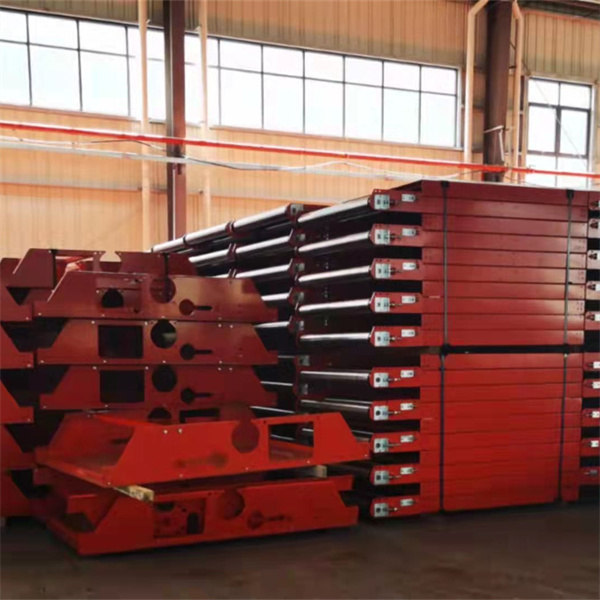We have more than ten years of experience than our peers and can provide you with better service.
Focusing on the elevator industry for more than ten years, it is more convenient to load and unload, save time, labor, and space, and can transport 2,250 pieces of goods per hour. The motors, frequency converters, hydraulic cylinders, and oil cylinders are all well-known foreign brands. Our packaging keeps each device intact. 90 degree chute, suitable for cross-belt sorting, balance wheel sorting, swing arm sorting, linear sorting, etc.
Drawer-Type Belt Conveyor,Drawer Belt Conveyor,Belt Drive Conveyor,Belt Driven Conveyor DMT Machineries (Suzhou) Ltd , http://www.dmtsz.com
The variety is "Canon 14". July 31 broadcast in three liters of white pots, 12 tablets per pot. Dingmiao was set on August 8 with 8 pots per pot. Apply 0.5 grams of urea, superphosphate, and potassium chloride to each pot. In September, the smart artificial climate room was moved to the natural light room to continue the culture. The temperature at room temperature was 28 to 23°C. On September 24, all parts were removed. Sep. 29th, September 1st, Oct. 1st to Oct. 4th. Marked earings for 4 consecutive days (headings to the top of the flag leaf sheath), from 8am to October 11th, October 6. At 8:00, different low-temperature treatments were performed in the intelligent artificial climate chamber. The processing temperature is 20°C; l. 5°C; QC and 12., °C, and 25°C. The processing days are 3 days; 4 days; 5 days. The control conditions of temperature and relative humidity during different low-temperature treatment periods were such that the artificial light intensity was about 20,000 meters of candlelight at the ear height. After the low-temperature treatment in each group, they were transferred to a natural light room (25 to 20°C, and the relative humidity was more than 70±10) until the end of the experiment. At the beginning of low-temperature treatment, the ears that headed on October 1 had blossomed more than 46.9 times; on October 2th, the heads that had been headed had blossomed more than 15.8; on October 3rd and ear heads, the heading rate was below 1 line. During the low temperature treatment period, the flowering process of the panicles was observed on October 2 and October 4 until the end of flowering. In addition, the flowering process of panicles on October 1 and October 3 was photographed on a soft X-ray machine from the beginning of low-temperature treatment to maturity, and matured on November 11th. Samples were taken according to treatments and distributed by size of branches. Inspection.
In the staged sowing and interplanting experimental area of ​​“Agro-Tiger 6′′ variety in the Jinhua Area Agricultural Research Institute, we also saw from the fruiting condition of the marker heading, under the condition of natural low temperature, the severely affected panicle development period and the condition of the artificial climate chamber. The results were generally consistent. After being harmed by natural cold, the end-flowering ear was very lightly affected, and the seed setting rate was 89.8. The rate of seed setting decreased with the delay of heading and anthesis, which was due to the increase in half pods and empty kernels. Caused. The decrease of seed setting rate of flowering panicles and upper flowering panicles in the upper and middle parts was mainly due to the increase of empty grains, indicating that low temperature suppressed the flowering-filling process of flowering panicles and produced empty grains.
In the artificial climate chamber artificial climate, under low temperature treatment of rice, the seeding period is 25 to 20 °C under the diurnal temperature conditions, there is no increase in the semi-embossed grain, which can also be evidence that the occurrence of semi-embossing in natural conditions is The gradual decline in natural temperatures is related. Based on the above results, it can be concluded that natural low temperatures directly impair the ear of flowering stage, resulting in the formation of empty grains and a reduction in yield. Low temperatures indirectly endanger various types of panicles before the flowering stage, delay the maturity period, and reduce the yield due to an increase in semiembryo growth.

Experiment on the Effect of Intelligent Climate Room on the Cold Damage of Late Rice
Growing more rice in the south has played an important role in increasing grain production and increasing the income of double-season rice and Sanmao. However, cold air is easily encountered during the flowering period of the post-season rice, leading to a reduction in yield. The cold weather has different degrees of harm to the flowering of late rice. The first is the low temperature and rainy weather, and the most is the reduction of production. The second is the low temperature and cloudy weather, the less production is cut, and the third is the low temperature and fine weather, and the yield is reduced little. In order to exert the potential of increasing yield in the three-matured system, we must focus on the effects of low temperature on flowering and seed setting of post-season rice, such as the temperature range affected by low temperature: the relationship between the duration of low temperature and hazards; the general victimization period of rice victimization and rice flowering and grain-filling period Laws, etc., provide basic information for the production department to take preventive measures and meteorological departments' low-temperature prediction and forecast. To this end, intelligent artificial climate chambers were used to simulate natural environmental conditions for low-temperature planting experiments on rice.